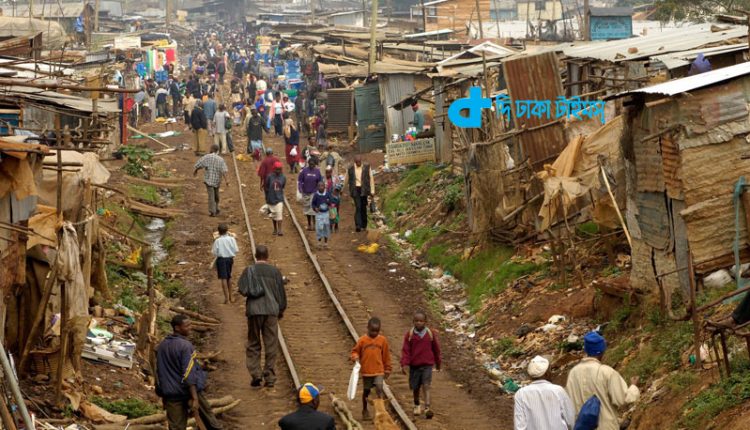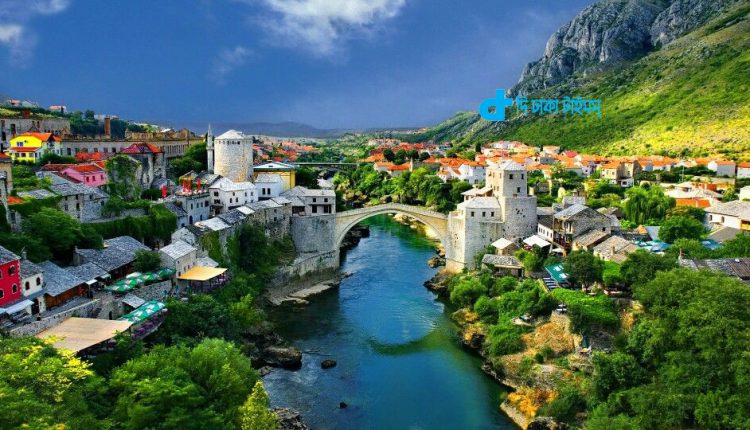The Dhaka Times Desk Europe is the preferred destination for citizens of third world countries including Bangladesh. Learn about some European countries in today's episode one.

Every year, many people try to migrate to Europe from different parts of the world, including Bangladesh, especially in the hope of higher education, better life or livelihood. This is because Europe is economically prosperous compared to other continents. However, there are many countries in Europe which are not very financially prosperous, these countries are far behind in terms of GDP or per capita income. These countries are completely different from the definition of Europe in the eyes of common people of our country. Maybe these countries are not among the poorest countries in the world, but on average these countries can be said to be very backward compared to other European countries.
But it is an unfortunate fact that Eastern European countries are very backward compared to other European countries. At one time, most of the countries of Eastern Europe were under communist rule. It is true that the communist rule has ended in these countries with time, but these countries have not completely freed themselves from the economic deadlock even today. Today we will try to know about some of the countries which are the poorest countries in Europe if we calculate them in terms of average income or standard of living. Average monthly income of common people in these countries is 250 Euros.
Moldova
If we talk about the poorest country, the poorest country in Europe should come first. Located in Eastern Europe, the country is largely a landlocked country, bordered by Romania to the west and Ukraine to the north, east and south. Chisinau is the country's capital and largest city. Moldova was once a part of the Soviet Union, and until the 1990s, Moldova was one of the most prosperous regions of the then Soviet Union. In 1991, Moldova emerged as an independent state after separating from the Soviet Union through the USSR. However, due to entering the free market economy from the socialist structure, it has a negative impact on the country's economy, directly affecting the country's industrial sector. Underdeveloped infrastructure, bureaucratic complications and corruption are almost daily companions of the country. Moldova's current GDP per capita is 1,679 US dollars, which is the lowest in Europe. According to the latest 2018 survey, 13.3 percent of the country's people are living below the poverty line.
Ukraine
When we hear the name of Ukraine, the name of Andriy Shevochenko first appears in front of our eyes, once the football of the whole Europe was full of the magic of his feet. Andriy Shevochenko, who won FIFA Ballon d'Or in 2004, was born in this Ukraine. After France, Ukraine is the second largest country in Europe in terms of size. Ukraine was the second largest economy in the entire Soviet Union. In 1991, Ukraine, like Moldova, separated from the Soviet Union through the USSR and formed a separate state. Ukraine is still far behind in terms of infrastructure. This happened because the level of corruption in the country is high. In 2014, Ukraine became embroiled in a conflict with Russia over its annexation of Crimea, which essentially disrupted the country's economy. Political instability is another major problem in the country. Ukraine's current GDP per capita is US$2,133, which ranks as the second lowest in Europe.

Kosovo
Kosovo is one of the disputed territories in Europe. Kosovo emerged as a separate state after separating from Serbia in 2008, but the United Nations has not yet recognized Kosovo as a fully independent state. The majority of the people of Kosovo are of Albanian origin. More than 30 percent of people in the war-torn country live below the poverty line. According to a survey published in 2018, the unemployment rate in the country is 34.8 percent and the per capita GDP of Kosovo is 3 thousand 893 US dollars.
Albania
Albania is one of the Muslim majority countries in Europe. One of the most criticized statesmen in history, Enver Hexhai was the former head of state of Albania. The country on the shores of the Adriatic Sea is best known to tourists for the breathtaking beauty of the Balkan Mountains and various castles and bunkers. Communist rule prevailed in Albania from 1941 to 1992. Needless to say, for a long time Albania was a country isolated from the rest of the world, like today's North Korea. Albania's GDP per capita is 4,537 US dollars. Although Albania is one of the poorest countries in Europe, the country is rich in natural resources, including mineral oil, fuel gas, coal, iron ore, and limestone, which show new hope for the country's economic growth.
Bosnia and Herzegovina
Bosnia and Herzegovina emerged as a separate state in 1992 after breaking away from the Federation of Yugoslavia. Like Kosovo, the country still bears the horrors of the Yugoslav wars. In terms of infrastructure, the country is quite underdeveloped, along with the recent refugee problem. The per capita GDP of Bosnia and Herzegovina is 5 thousand 647 US dollars. After independence, the country's government focused on economic development, but due to political instability, the country could not progress in that direction. Although Bosnia and Herzegovina is an independent state on paper, in reality there are 3 different ideological governments in the country. Bosniaks rule Muslim-dominated areas but have no authority in Serb-dominated areas. The same is true in the Croat majority regions. Although people of each ethnic group feel more comfortable being governed by their own ethnic government, the rulers face many obstacles in adopting any long-term plans for the country.
Things to do to prevent Corona virus
# stay at home all the time.
# Follow the rules and use mask when going out for emergency.
# three-layer surgical mask can be washed if desired.
# wash clothes after coming home from outside. Or hang it without shaking for at least four hours.
# Wash hands thoroughly (for at least 20 seconds) with soap or liquid before coming outside.
# plastic PPE or eyes, mouth, head after single use
Of course it can be washed thoroughly with detergent and dried.
# Wear PPE made of cloth or clean as described.
# Use a head cap that completely covers the hair.
# Those who have sneeze cough should follow all the rules promulgated by the government. Also, wash hands as directed before and after handling food items, keys, switches, mice, remote controls, mobiles, watches, computer desks, TVs, etc. and after using the bathroom. Those who have dry hands use Moisture after washing their hands. Soap or hand liquid can be used. Why can this virus remain in the crackle (cracked part) of dry hands? Avoid using highly alkaline soaps or detergents.


